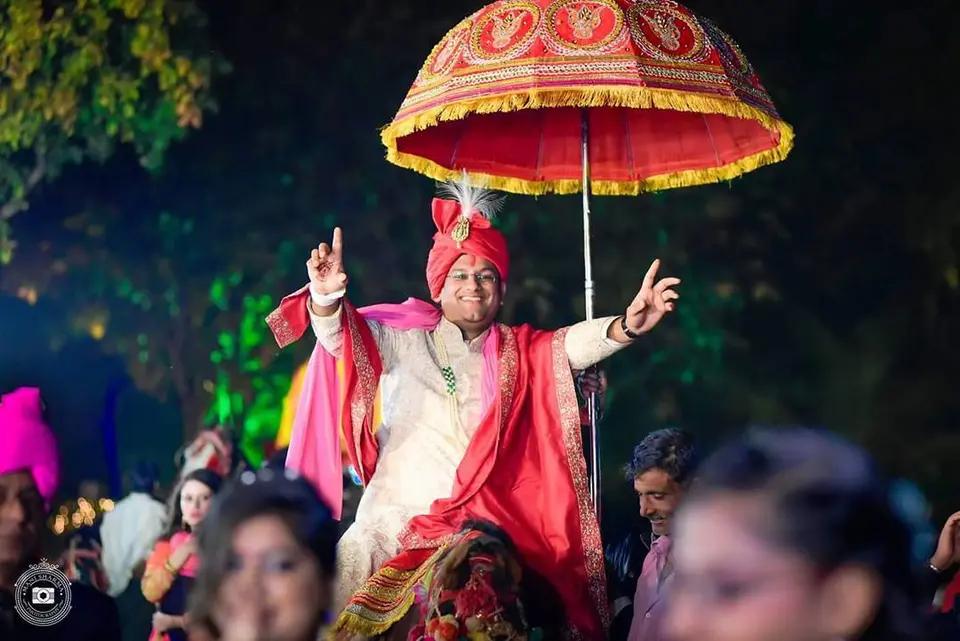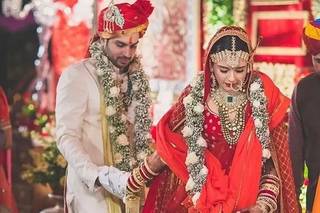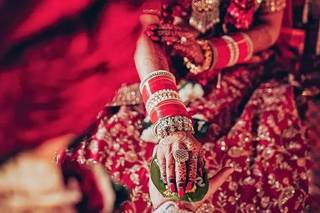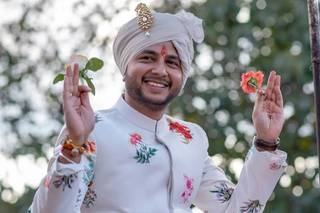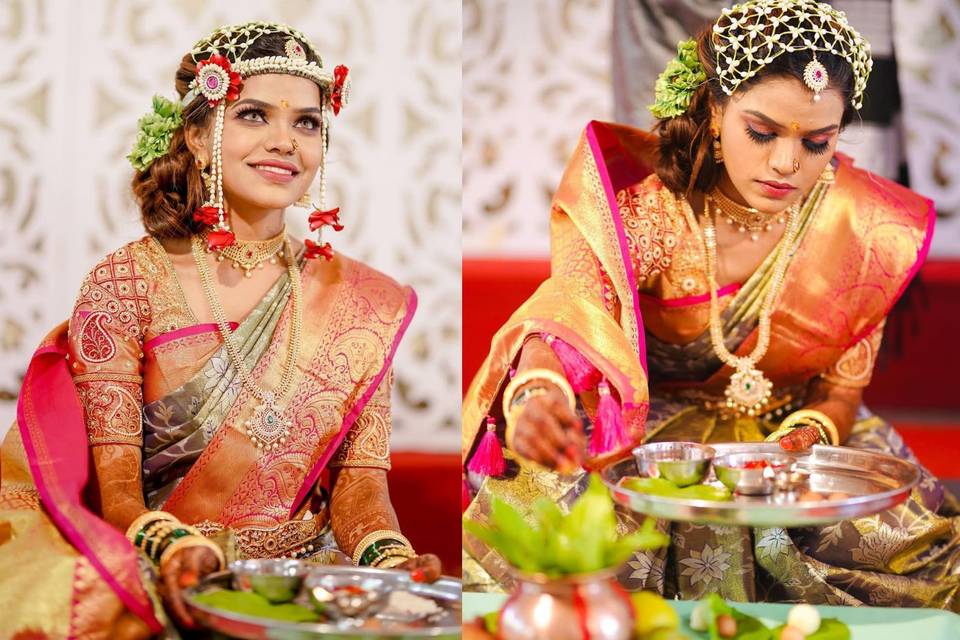Decoding Indian Weddings: Rituals and Traditions of a Jain Marriage Ceremony
Read all about the rituals of Jain marriage ceremonies and their cultural significance.


Photography: Jumping Souls
The comprehensive ways in which marriage ceremonies are performed in the country reflect the diversity of India from more than a single angle. While we know the rituals and traditions of some communities quite extensively, some often stay behind the curtains. We intend to take the curtain up today and talk about the wedding rituals during Jain marriage ceremonies. The Jain community in India are the oldest followers of the Sramana traditions, following the faith laid down by the 24 Tirthankars. Broadly a business-oriented community, Jains thrive across the country in more than 110 sub-cultural sects. They also have a strong presence abroad. The group is known for close-knit and strong family ties and simple approaches to life.
A Jain Hindu marriage is a profoundly spiritual and culturally rich event marked by ceremonies emphasising simplicity, purity, and adherence to religious principles. The rituals and customs are performed with utmost devotion, aiming to strengthen the couple's bonds of love, respect, and duty.
So, when a Jain marriage ceremony takes place, it is a vital celebration of family and friends - simple in ethos and yet expansive in scale. Here are some of the more common traditions that one would see during a wedding from the community. While the traditions and customs may differ by region, their essence remains the same:
1. Pre-wedding Ceremonies at a Jain Wedding
3. Post-wedding Ceremonies at a Jain Wedding
Up to 30% off on Venue Packages
Pre-wedding Ceremonies

Photography: Knotting Bells
Lagna Lekhan
The Lagna Lekhan is a Jain marriage ceremony in which the wedding date is decided after a Puja is conducted at the bride’s place. The precise date and time of the wedding are decided on this day. This is akin to finding the Shubh Mahurat and consultation of the almanack or the Kundlis, as done when astrologers try to divine a marriage muhurat by date of birth.
Lagna Patrika Vachan
You will find this ceremony quite exciting and unique to the Jain community. Here, a letter, usually formal, is drafted. The letter contains the Muhurat of the wedding and is sent out to the groom’s family. The groom’s family opens and reads this letter in front of close relatives after a small puja. A Lagna Patrika Vachan for a Jain marriage ceremony resembles a Marathi Lagna Patrika.
Khol Barana and Tikka
Khol Barana is the inauguration of the Jain marriage ceremonies. As a custom, the groom’s family gifts a silver plate with the auspicious coconut and some cash as a Shagun. While this is called the Khol Barana, the tradition of the bride’s family going to the groom’s home with gifts is known as the tikka or the Tilak ceremony.
Sagai
Like in most other communities, the Sagai, or the engagement ceremony, doesn’t involve the couple exchanging rings. In the Jain community, Jain marriage is announced through a tilak. The bride’s family visits the groom’s family, and gifts and sweets are exchanged, along with a tilak ceremony for the groom. This Sagai is a typical pre-wedding ceremony across communities, from the Marathi Sakharpuda on one end to the typical Sagan ceremony on the other.
Mehndi
While the intent and timing for the Mehndi ceremony during a Jain marriage are similar to one across the country, we see subtle differences here. The mehndi function here is more of a homely affair, with the women coming together to apply mehndi designs to the hands of the bride and dab some for the groom as well. Some distinct Jain mehndi designs are in high demand during this function, which is different from the designs we see on brides everywhere else. The mehndi ceremony here is just like in most Indian ceremonies. Women from the extended Jain family The females of the family gather, and mehndi are applied to the hands of the bride.
Sangeet
The Sangeet is a joyful pre-wedding celebration filled with music and dance. Both families come together to celebrate the impending union. This event is marked by performances, often prepared by family members and friends.
Bana Betai
This ceremony is unique to Jain weddings, where the bride and groom's homes are decorated with banana trees, symbolizing prosperity and growth. It marks the festive beginning of the wedding celebrations.
Bhatwaan or Pithi Dastoor
This ceremony involves applying turmeric paste to the bride and groom separately, signifying purification and beauty. It is performed at their homes and is similar to the Haldi ceremony in other Hindu weddings.
Jain Marriage Rituals

Photography: Anuraag Rathi
Mada Mandap
The Mada Mandap is the ritual of sanctifying the Mandap where the wedding occurs. It’s one of the first rituals performed on the day of a Jain marriage. A day before the wedding, a mandap is constructed in both the bride's and groom's homes. It is considered sacred, and it is the space where most wedding rituals take place.
Griha Shanti Puja
This is a vital ritual in which prayers are offered to the Navagrahas, or the nine planets and deities, to remove obstacles and ensure a harmonious marital life. It involves the presence of the bride and groom, along with their families.
Ghudchadi
And something similar once again! The Ghudchadi is where the groom initiates the ceremony with the Barat on his horse. The females of the house tighten the headgear and apply tilak on the groom’s forehead before the procession starts.
Barati
In simple language, we understand Barati as the procession with the groom, but as per Jain rituals, Barati is the welcome of the procession by the bride’s family. The bride’s brother also gives the bride a welcome gift containing coconuts, sweets, clothes, and other things.
The traditional folk song is then sung by the bride’s mother and other married females of the house while welcoming the groom with a tilak.
Kanyavaran and Hasta Melap
And then comes the most emotional custom of all, the giving away of the bride! The bride's parents present the bride to the groom and declare that their daughter is married to the groom. The groom takes the bride’s hand (which consists of a rupee and a quarter, along with some rice), and the pundit chants the mantras. The bride and groom's hands are joined by the bride’s father, symbolising the union of the two families. This is followed by the Hasta Melap, where the groom promises to protect and cherish the bride.
Granthi Bandhan
Granthi Bandhan is the ritual in which a married family woman ties the ends of the bride and groom’s clothes.
Pheras and Mangal Sutra Ceremony
The pheras are similar to the Hindu tradition in which the bride and groom take seven rounds around the fire and take their wedding vows. After the Phere, the groom ties a sacred thread or Mangal Sutra around the bride’s neck, symbolising their eternal bond.
Ashirvad
The couple seeks blessings from the elders present by touching their feet. This ritual signifies the beginning of their married life with the good wishes and prayers of their families.
Top Wedding Photographers In India
Post-Wedding Ceremonies

Photography: Moonstruck Weddings
Bidaai
The family members bidding farewell to their daughter is known as the Bidaai ceremony. We fail to put the emotion of the moment into words.
Griha Pravesh
Upon reaching the groom’s house, the bride is welcomed with an Aarti. She is asked to tip over a pot filled with rice, signifying prosperity and the beginning of her role as the homemaker. This ritual is known as Griha Pravesh.
Jina Grahe Dhan Arpana
After a tearful ending, a happy beginning arrives. The bride is welcomed to her in-laws' house with rituals that differ according to the region and local sects. After that, a ritual is performed in which the couple visits a Jain temple and distributes alms to the poor. They offer donations and seek blessings from the Jina (a revered figure in Jainism) for a happy and prosperous married life.
Reception
After a day or a couple of days, the groom’s family organizes a reception, where relatives and friends come and bless the couple for a happy married life.
Sata Phera
This ritual is usually conducted a day after the wedding. The couple takes another set of seven vows, reaffirming their commitment to each other. It is a reaffirmation of the promises made during the wedding ceremony.
Just like other communities of India, the ceremonies included in a Jain marriage are also deep-rooted in the values and traditions of the community. To have such variant ways of getting married is only seen in India, which is truly incredible India. Jain weddings are deeply spiritual, focusing on purity, simplicity, and the couple's journey towards spiritual and worldly fulfilment together. The rituals are imbued with meaning, ensuring that the marriage is not just a union of two individuals but a sacred bond that aligns with their religious beliefs and cultural values.
Decoding Indian Weddings with WeddingWire India:








